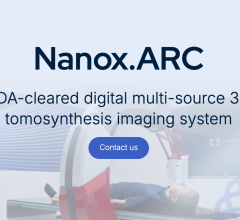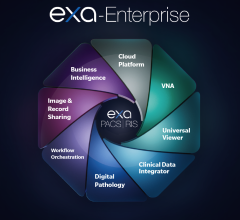
An example of Vessel Assist used to create vessel centerlines through a CTO to help guide revascularization in the cath lab.

An example of FlightPlan for Liver to assist in guiding interventional oncology liver embolization procedures.
December 14, 2015 — As the field of interventional medicine grows, so do the challenges for clinicians to plan, guide and assess increasingly more complex minimally invasive procedures. At RSNA 2015, GE Healthcare showcasing its Assist brand, a collection of new interventional imaging software packages designed for specific clinical subspecialists and complex endovascular procedures to help clinicians perform procedures with greater accuracy, dose efficiency and confidence.
The suite offers simple to use fusion imaging for computed tomography (CT) 3-D image reconstructions that can be overlaid or fused with live angiography in the cath lab.
The new Assist suite of targeted software solutions include:
• Vessel Assist: aimed at better navigation in vessels for chronic total occlusions (CTO), transjugular intrahepatic portosystemic shunt (TIPS) and interventional neuroradiology arteriovenous malformation (AVM) and aneurysms.
• EVAR Assist: for vascular surgery, endovascular aortic repair (EVAR).
• Needle Assist: for bone interventions and pelvic bone osteosynthesis.
• FlightPlan for Liver: for interventional oncology liver embolization.
• Valve Assist: for interventional cardiology transcatheter aortic valve replacement (TAVR).
• PCI Assist: for interventional cardiology complex percutaneous coronary intervention (PCI) navigation
The Assist packages offer a range of capabilities and benefits, including for planning and guiding procedures. For planningit allows easy anatomy segmentation and extraction of the 3-D anatomy in two clicks, measuring the vascular with accuracy like length and diameter, and adding landmarks. The workflow filters out noise and provides the imaging information clinicians need at their fingertips with minimal clicks.
For guiding, the software allows augmented reality with 3-D image multi-modality (MR/CT) fusion with BiView registration helps achieve up to a 99 percent dose savings.
For more information: www.gehealthcare.com



 November 11, 2025
November 11, 2025 









